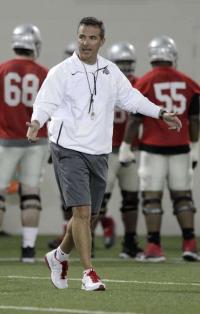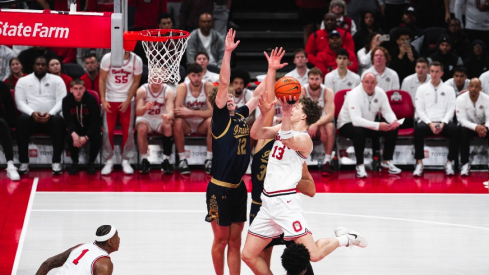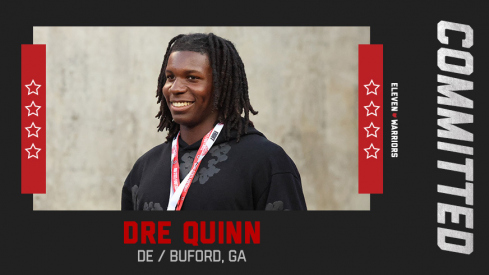 Sending the huddle the way of the dodo
Sending the huddle the way of the dodoSeveral weeks ago I discussed Ohio State's change to a no-huddle offense under Urban Meyer, focusing on why the Buckeyes would move to such system and how the no-huddle can be implemented. Meyer's decision to go no-huddle is such an important change, however, that I believe a few more words are warranted.
As Chris Brown discusses here, Meyer is adopting an inevitable trend. As noted, the offense is provided the ability to control the action, and hence a game's tempo. Going no-huddle allows the offense to vary the tempo and forces the defense to match (what is often) a fast pace of play. The huddle offers little beyond perhaps permitting a quarterback to speak to the offense, and serving (whether consciously or not) as a way to slow tempo. It is unnecessary as a means of communicating information. Indeed, it may simply afford coaches the opportunity to make things unnecessarily complicated. Play calls can adequately be provided through either signals or simple word play calls.
The huddle's downside, by contrast, is ceding a large amount of the offense's control over dictating the pace and style of play to the defense. The no-huddle, by forcing a defense to immediately match alignment, limits the defense's options in terms of substititutions and disguise, making things simpler without any corresponding loss of complexity for the offense. Here is Brown:
Modern defenses want to match offenses in terms of strength and speed via personnel substitutions. They also want to confuse offenses with movement and disguise. The up-tempo no-huddle stymies those defensive options. The defense doesn’t have time to substitute, and it’s also forced to show its hand: It can’t disguise or shift because the quarterback can snap the ball and take advantage of some obvious, structural weakness. And when the defense is forced to reveal itself, Tom Brady can change into a better play. The upshot of this tactic: Brady, of all people, sees defenses that are simpler than those most other NFL quarterbacks go up against.
For an apt example from Brown's article, check out Robert Griffin III's discussion with John Gruden as to how their no-huddle forces a defense to a) match Baylor's tempo (thereby tiring the defense) and either b) limits substitutions or c) creates mismatches for the offense by the defense attempting to substitute.
But more importantly, as Brown discusses, perhaps the most undervalued asset the no-huddle delivers is practice repetitions.
College teams have relatively little practice time. The no-huddle allows an offense to get far more repetitions. While in the past a team may run a play, then a coach would instruct one player with the ten other players standing around, no-huddle teams can repeatedly rep plays, with coaching corrections made when the second team takes its turn or in film study. In this manner, a no-huddle team gets actual football reps, as opposed to 'dead time.' Oregon, for instance, gets in up to 30 snaps in ten minutes, allowing the Ducks to use less practice time but still gain more reps than the competition. The same amount of practice time can therefore be used in a more efficient manner. For example, here is film of Louisiana Tech employing such a practice schedule this spring (Courtesy of Brophy).
By all accounts, Ohio State's practice time has taken on this frenetic tempo. Meyer & Co. clearly hope to gain the positive externality provided by going no-huddle--getting extra practice repetitions and in so doing creating a more efficient practice environment. In short, Ohio State will not be the first no-huddle team, but will nonetheless get the benefits being no-huddle provides. As Brown states:
The upshot is that the no-huddle puts additional pressure on defenses, simplifies communication, and makes practicing better, more efficient and — sometimes, at least — more fun. It’s a no brainer.

